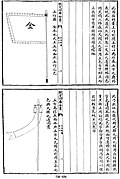This article needs additional citations for verification .(June 2022) |
This is a list of flags of entities named or related to "China".
Contents
- People's Republic of China
- National flags
- Special administrative regions flags
- Military flags
- Civil flags
- City flags
- Political flags
- Proposed national flags of the People's Republic of China
- House flags
- Historical socialist states
- Republic of China
- National flags 2
- Standards
- Military flags 2
- Coast Guard Administration
- Police
- Fire Service
- Rescue aviation
- Ministries
- Councils
- Agency
- Civil and Merchant Ensign
- Postal flags
- Chinese Maritime Customs Service
- Salt Administration
- Yacht Club Ensign
- Sporting flags
- City and county flags
- Provinces
- University flags
- Political flags 2
- Cultural flags
- Proposed flags
- Railway flags
- House flags 2
- Association flags
- Warlords
- Qing dynasty and other pre-1912 states
- National flags 3
- Standards 2
- Military flags 3
- Chinese Maritime Customs Service 2
- House flags 3
- Flags of localized regimes
- Manchukuo
- National flag
- Standards 3
- Manchukuo Imperial Army and Navy
- Government flags
- Police flags
- Political flags 3
- Other
- Other Japanese puppet states
- Foreign concessions and colonies
- Dalian
- Tianjin
- Chinese Eastern Railway
- Hong Kong
- Macau
- Qingdao
- Shanghai
- Weihai
- Zhanjiang
- Former secessionist states
- East Turkestan
- Tibet
- Misattributed flags
- See also
- Notes
- References
- External links
































































































































































































































































































































































































































































































































































































































